#shōwa manga
Text
Here it is, one of my all time favorite Shōwa manga that I sadly couldn’t find anywhere online, and very little information about in general. I bought the books back in 2021 and finally got around to scanning, formatting, and uploading them online so everyone can enjoy. So, here’s volume 1 of Hiroshi Kaizuka’s WW2 boys’ manga Zerosen Red! Volume 2 will also be up soon 😋
Really hoping by making the whole thing available I can get more people into it so they can hear my endless autistic rambles about this 60 year old comic :,D
A friend and I are also in the process of translating both books into English… a beast of a project but one that I’m thoroughly enjoying 👀 I’m so damn excited by the prospect of other people discovering this and becoming as obsessed as I am >:3
#ゼロ戦レッド#retro manga#vintage manga#1960s#60s manga#archive#Hiroshi Kaizuka#shouwa manga#shōwa manga#showa manga#pacific theatre#pacific theater#WW2#historical fiction#Sunday comics#Zerosen Red
5 notes
·
View notes
Text
Amestris Military Training
This is the fourth of my series of long posts about the Amestrian Military. This is the speculative part of this meta. Little is known about the training the Amestrian soldiers receive, the most we have seen about it comes from the OVA “Another man's battlefield” and a few scenes in the manga. However, as we have seen through this series of posts, Arakawa took a lot of inspiration from the real world. The Imperial Japan military training seems to match a lot of what we see in FMA. Brace yourself, this is long and history heavy.
Once again, I'm not a historian and I'm not fluent in Japanese. Please let me know if there's anything I missed or got wrong.
To see the rest of this meta series check out the Main Post.
First a little background about the Empire of Japan. It was the Japanese nation-state that existed from the Meiji Restoration in 1868 until the enactment of the reformed Constitution of Japan in 1947. Its history is divided in three periods named after the emperors that presided over them: Meiji (1868-1912), Taishō (1912-1926) and Shōwa (1926-1947).
This is a period of transformation for Japan, where they opened to the world and tried to modernize themselves and catch up with the western nations… by copying them. Meiji Japan is almost a pseudo European country. Their laws, government organization, education, etc. was reformed and modeled after the contemporary European nations and the United States of America. The influence of the third French Republic was especially strong in the early Meiji period, with it getting revised and remodeled in favor of other systems — mostly German as the relationship with the USA and its allies soured — throughout the years.
This is also the case in their military education.
Officers training
During the early Meiji, the military cadets (meaning candidates to become officers) received a French style training which was later changed to a German style cadet system. The main difference between the two systems is that the German style required for the cadets to gain experience as Non-commissioned officers before graduation, while the French one didn't.
Based on what we see in Fullmetal Alchemist they follow the German style system that lasted from 1887 to the American intervention in 1945. The main indication of this is that we see Riza Hawkeye in Ishval as a NCO.[1] She would've never been there under the French system. The time frame of the German style training also matches what we see in FMA. I'll explain this a bit later.
For now let's concentrate on who and how someone could enter the Imperial Japan Army Officers Academy.
Three types of students could enter the academy: graduates of the Army's Children School, graduates of Junior high school (both these schools covered ages 12 to 16), and selected active Non-commissioned officers who applied for officer training.
The graduates of the army's children school didn't need to pass any exam to enter the academy, but only the best were selected. They had to compete for positions with the external candidates, those aged 16 to 19 who passed the recruitment exam (which required at least a junior high school education). Both of these students would enter the academy as cadets.
While the program was revised many times, the longest standing program was the 2 courses 4 years system.
In this system the cadets would first take a two year military officer preparatory course that was equivalent to regular higher education. They were taught science, history, geography, etc. by civilian teachers. Their rank (the equivalent of private first class), military branch, and unit were designated upon graduating the preparatory course.
After graduation the cadets would serve in their designated unit for six months (during which time they were promoted to corporal), afterwards they would be given the rank of sergeant upon entering the main military officers course.
The main course was 1 year and 10 months long, and it was where the actual military training happened. The cadets would be taught tactics, military history, military system, weaponry, marksmanship, etc. they would also receive training in camp duty, shooting, swordsmanship, gymnastics, horsemanship, etc. in addition field trips were also conducted.
Upon graduating they would become Apprentice Officers (a rank equivalent to Sergeant Major, the highest of the NCO ranks) for a trial period of about six months. Afterwards they would be officially appointed as 2nd Lieutenant (the lowest of the officers ranks) on the recommendation of their original troop's officer corps.
Now you might be wondering why I think Arakawa used this system (or rather one inspired by it) in Fullmetal Alchemist. I have a few reasons.
The first is the characters' ages. We know Roy and Hughes are 18 in “Another man's battlefield”, and we see them training in marksmanship and military tactics. We also see they have upperclassmen which implies the course is longer than one year.[2] We also know that Roy is 20 years old when he graduates the academy and visits the Hawkeye family, thanks to brotherhood giving us the date of Berthold's death.[3]
This all matches with the imperial Japan German style cadet system, where the majority of students would enter the preparatory course at 16 upon graduating from junior high school or the military school, they would then be 18 at the time of starting the main course, and 20 upon graduating from the academy. The ages of the characters and what we see on screen matches the system’s time frame.
Riza Hawkeye is yet another example three years after her father's death and conversation with Mustang, during the Ishval war, she is yet to graduate from the academy.[1][3][4] Either the Amestris academy lasts more than the two years we see Roy and Hughes go through, or she waited about two years to enter the military Academy (otherwise she would have already graduated by Ishval). I don't think it makes sense for her to wait so long to join the academy, specially if it has an age cap (of 19 in Imperial Japan). So assuming she entered right after her father died, that would put her in the last year of the German style system by the time we see her in Ishval, perfect for getting pulled into a war with her already assigned unit.
This brings me to my second reason for believing Arakawa is using this system: the ranks.
I mentioned before that the cadets in FMA don't seem to have a rank, this makes sense when you consider that in imperial Japan they were given ranks that do not exist in FMA. Instead of adding ranks or messing up with the system Arakawa might have just completely skipped them (much like she seems to have done with the military police).
I also mentioned that graduates (the so called Apprentice Officers) are assigned a temporary rank of Sergeant Major. In FMA we know that you graduate with a rank of Warrant Officer[1][3][4]. But hold on, that's not the same… well not in name, but yes in practice. Sergeant Major was the highest NCO rank in Imperial Japan. It's not in FMA, that's Warrant Officer. So technically they're equal ranks. Furthermore, It doesn't make sense for a graduate of the OFFICER school to be officially assigned an NCO rank, unless that's for a trial period like in the German style cadet system. For reference, the French style system assigned graduates the rank of Second Lieutenant (the lowest officer rank) upon graduation, since it didn't require the cadets to gain NCO experience. The fact that we are shown both newly graduated Riza and Roy with the rank of Warrant Officer can only mean there is also a trial period in Amestris.
Further proof of this is that within a year of us seeing the freshly graduated Warrant Officers Riza Hawkeye in 1909[1][3], she's already a full fledged 2nd Lieutenant by the time we see her in Resembool in 1910[5], and again she's a 1st Lieutenant a year later when Ed becomes a State Alchemist[5]. Riza is good, but that's a lot of promotions in a short time. It makes more sense if you think that she was officially assigned her 2nd Lieutenant rank after completing her 6 months trial period, and then she was promoted around the same time as Roy got his Colonel promotion, perhaps for her work in Ishval + whatever cases they worked together. Now, that seems a lot more reasonable than Riza averaging a promotion per year in her early military days.
Another hint towards this system is the number of 2nd Lieutenants we meet: Havoc, Breda, Ross, Catalina, Henschel, Darius, Heinkel, Jerso, and Zampano. This is the rank we see the most of, and it makes sense if they all got it by going through the Officers Academy. We know this to be true for at least Havoc and Breda.
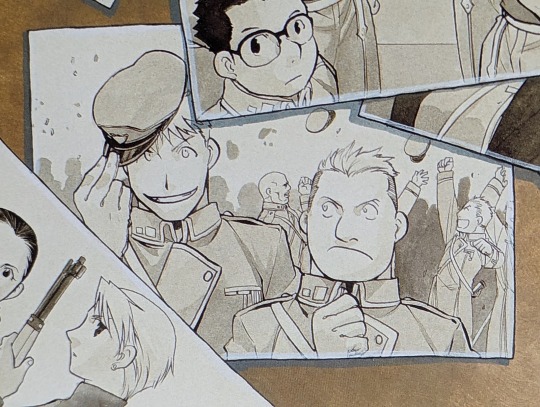
Havoc's and Breda’s graduation.[6]
Now you might notice I haven't mentioned the third type of student, the active non-commissioned officers (aka Second Lieutenant candidates). This is because while they go through the academy too, they're very different from the cadets:
They must be under the age of 38 and pass the Army Preliminary Course recruitment examination, which is different from the cadets exam.
They do NOT live on campus.
Their training only lasts 1 year (during peacetime), unlike the cadets 4 years.
Because they are older than the cadets at the time they become officers, their promotion ceiling is lower as they hit the active duty retirement age before achieving high ranks.
Falman would fall into this category as he was a Warrant Officer for more than six months and clearly looks older than the rest of team Mustang. However, a year does not pass between him getting appointed to the North and him getting his promotion. My explanation for that is that the North has a shorter program for Second Lieutenant Candidates. In imperial Japan not only was the program shorter during war time (10-2 months), but the time also depended on which branch, region, and school you enrolled in. Since the North is quite hostile and is technically in a cold war with Drachma, it makes sense their Second Lieutenant Candidate program is short. The other explanation is that Falman started the program before being transferred.
That more or less covers the Officers military training and education. Feel free to ask me if you want a more day to day explanation of the cadets’ life at the academy. You can also check this article. There's at least one documentary about it, available on Amazon Prime Japan.
Non-commissioned officers training
NCO’s training in Imperial Japan was first performed by the training corps (1871–1899), then by each unit (1899-1927), then after a decline in quality it was done at a training school (1927-1938), and finally back to the training corps until the American intervention. It's impossible for me to know if Arakawa used this system for the NCOs, and which period she chose to use, given how little information we have about the NCO characters. I still mentioned it in case anyone was curious about Fuery’s training. The training school lasted just one year and it was focused on general education, military education, and technical training.
The military police
To end this, I will mention that the military police had their own academy separate from the officers’. They also had their own ranks equivalent to those of the army, i.e. Police First Lieutenant. It is possible this is the case in FMA. They're at the very least not trained together with the military personnel.
Thank you so much for reading all the way to the end. I hope you enjoyed reading this as much as I enjoyed writing it. Please don't hesitate to reach to ask questions or just rant about this. I love discussing FMA.
Source
Fullmetal Alchemist Manga
Chapter 24: Fullmetal Alchemist [5]
Chapter 58: footsteps of ruin [4]
Chapter 59: the immoral alchemist [1]
Fullmetal Alchemist Brotherhood
Episode 30: The Ishvalan war of extermination [3]
OVA: Another man's battlefield [2]
The complete art of Fullmetal Alchemist [6]
39 notes
·
View notes
Text

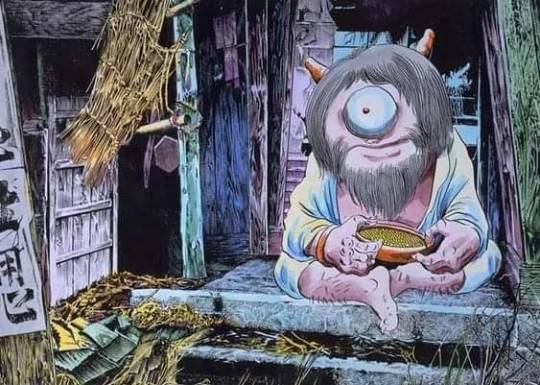


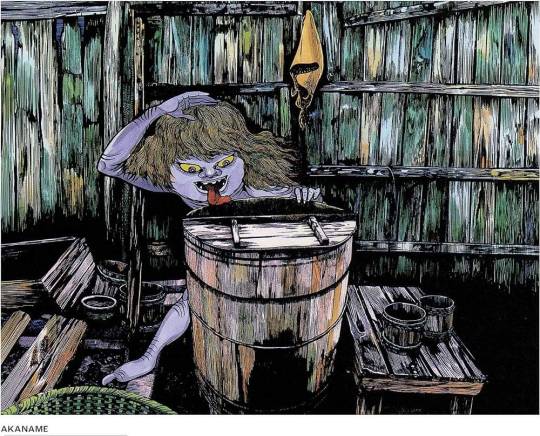





Shigeru Mura (Japanese: 武良 茂, Hepburn: Mura Shigeru, March 8, 1922 – November 30, 2015), also known as Shigeru Mizuki (水木 しげる, Mizuki Shigeru), was a Japanese manga artist and historian. He was known for his yōkai manga such as GeGeGe no Kitarō and Akuma-kun, as well as for his war stories based on his own war manga such as Shōwa-shi.
He was born in Osaka, grew up in Sakaiminato, Tottori, then moved to Chōfu, Tokyo, where he remained until his death. His pen-name, Mizuki, comes from the time when he managed an inn called 'Mizuki Manor' while he drew pictures for kamishibai.
#mizuki shigeru#mangaka#manga#japanese folklore#yōkai#japanese manga artist#yōkai manga#japanese historian
10 notes
·
View notes
Text
Favorite Akira Ishida role

I pulled for Ayato in Genshin Impact for Akira Ishida mostly. Break from Pandora Hearts is my absolutely favorite character. Akira Ishida's performance was insanely good and I wished they had continued the anime according to the manga...
Honorable mentions: Gaara from Naruto, Natori Shuuichi from Natsume Yuujinchou, Yakumo from Shōwa Genroku Rakugo Shinju, Fyodor from Bungou Stray Dogs
They remade so many animes recently like my old-time love Fruits Basket. I can only hope they will remake Pandora Hearts sometime in the future as well. Hell, even the German dub of Pandora Hearts was quite good.
3 notes
·
View notes
Note
6, 7 and 8 for the artist ask?
6. Which artists inspire you right now?
I think for a while I've been really into romanticism as a whole, and especially the pre-raphaelites -- something about those works just speak straight to my soul and also I just wish i could paint like that.
7. Favourite works of all time excluding your own?
I know I'll forget some for sure so jkewhgkwe I'll say the first that pop to mind. I'll also do some different categories because why not.
Painting: Judith Slaying Holofernes by Artemisia Gentileschi
Movie: Portrait of a Lady on Fire, Arrival
Animated movie: Shoujo Kageki Revue Starlight - Wi(l)d Screen Baroque
Book: The Locked Tomb series, Earthsea
Manga: Houseki no Kuni, Witch Hat Atelier, Our Dreams at Dusk
Anime: Kyousogiga, Mononoke, Shōwa Genroku Rakugo Shinjū, Mushishi
8. What do you like most about your own work?
I think lighting design and colours <3
5 notes
·
View notes
Text
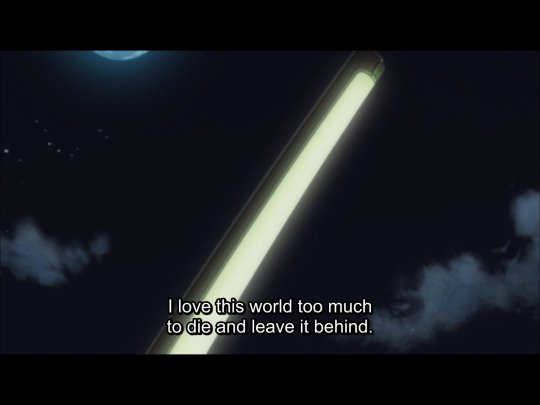
#Shōwa Genroku Rakugo Shinjū#Shouwa Genroku Rakugo Shinjuu: Sukeroku Futatabi-hen#Shouwa Genroku Rakugo Shinjuu#mybestaquotes#manga#mangacap
7 notes
·
View notes
Text
YEAR 24 GROUP
A group of women who revolutionized the world of shōjo manga and the vision of the female mangaka.
They are known as the Year 24 Group or as Forty-Niners since they were all born around the year 24 of the Shōwa era (1949)
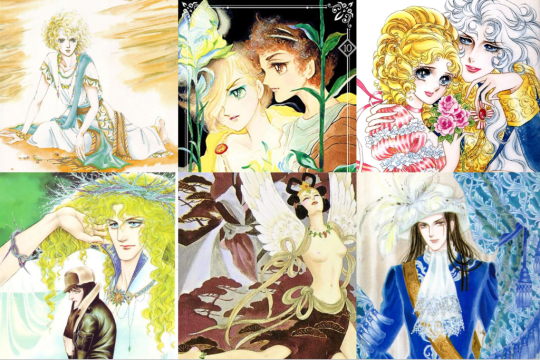
The entrance of women to the dedication of manga as a profession was very slow, since until then being a mangaka was a well-accepted job only for men. Meanwhile, Japanese women were still tied to housework.
But Japan after losing World War II was occupied for 7 years by the United States, which caused changes in Japanese customs. Beate Sirota, an American defender of women's rights, introduced legal equality between men and women in the 1947 constitution. She also gave the right to marriage by mutual agreement and lastly she gave women the right to divorce, to own/buy property and to inherit. Thanks to Sirota, women were freed little by little from being housewives, if they wanted, and were able to dedicate themselves to jobs that were previously considered for men, more naturally.
During the 70s, after the student strikes, the scourge of modernity and the sexual revolution, the mangakas of the Year 24 Group began to debut and the manga stopped having molds.
The Magnificent Forty-Niners cast aside the innocence of the female mangaka that preceded them, yet are aware of their limitations, praise their achievements, and serve as an influence.
The women of the Year 24 Group were by no means conformists, as evidenced in their works and private lives, and made shōjo an exploratory category in which they included new genres that had never been touched before in this demographic. Until now, Shōjo was mainly (if not only) about the simple life of high school girls, it was just about the slice of life. But these ladies gave depth to the characters, filling them with philosophical or existential questions and on several occasions the girls stopped having the leading role. They introduced other genres such as science fiction, shōnen-ai (currently bl, love between two men) or bildungsroman and included elements such as the exploration of sexuality, genderqueer characters, adult women, vampires or rock and roll. And they dared to place their stories in places outside of Japan and in the past.
Moto Hagio was the core of the Year 24 Group and shared an apartment outside of Tokyo with another top Forty-Niner, Keiko Takemiya, for 3 years (1970-1973). Later the apartment became the Ōisumigakuen or Ōizumi Salon, a center where beginner mangaka girls will go to learn about manga, help each other and share ideas.
Gradually they gained popularity. Moto Hagio, Keiko Takemiya, Riyoko Ikeda, Yasuko Aoike, Toshie Kihara, Minori Kimura, Yumiko Oshima, Nanae Sasaya and Ryoko Yamagishi, all of them are part of the Year 24 Group whether they are more or less known in the West, in Japan they won their recognition.
— MŌTO HAGIO (1949-)
Currently she is the best known of the "Year 24 Group". Although she liked to draw since she was a child and in adolescence she was clear that she wanted to dedicate herself to manga, she did not have it easy since her mother didn't like it.
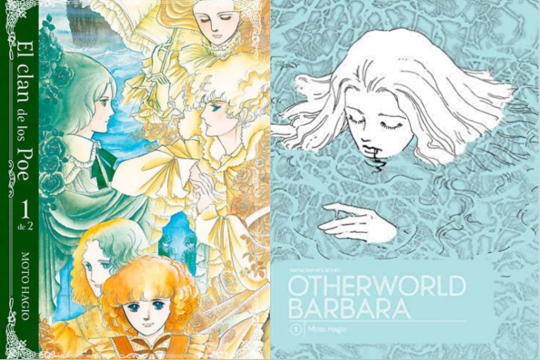
♡ The Poe Clan (1972-1976)
- Shōjo/josei (fantasy, horror)
- Spanish
♡ Otherworld Barbara (2002-2005)
- Josei (science fiction)
- English
—KEIKO TAKEMIYA (1950-)
Is dedicated to the teaching and dissemination of manga and also to preserve and reproduce manga with historical value.
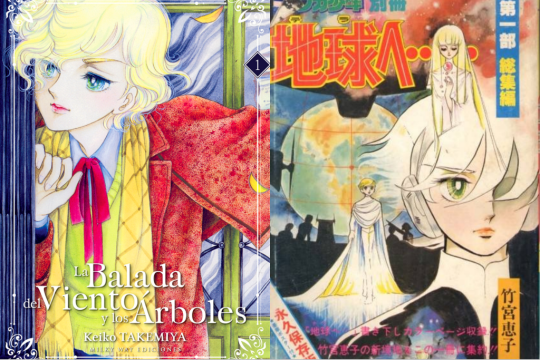
♡ The Song of Wind and Trees (1976-84)
- Shōjo (shōnen-ai/bl)
- Spanish
♡ Tera e... (1977-1980)
- Shōnen (space opera)
- Spanish
—RIYOKO IKEDA ♡ (1947-)
♡ The Rose of Versailles (1972-1973)
Studied philosophy at university while drawing manga, although she finally had to leave his studies due to pressure.

- Shōjo (historical, romance)
- Spanish / english
♡ Oniisama e... (1973-1975)
- Shōjo (drama, slice of life)
—YASUKO AOIKE (1948-)
Debuted at the age of 15 by winning an award from a magazine. The vast majority of her works are or have shōnen-ai elements, since she grew up surrounded by strong men (her family had a construction company).
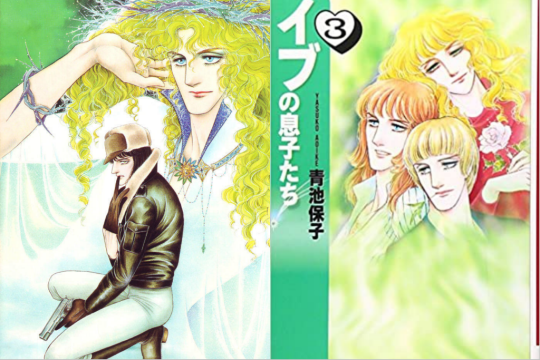
♡ From Eroica with Love (1976-2012)
- Shōjo (comedy, action, bl)
♡ Sons of Eve (1976-1979)
-shōjo (comedy, bl)
—RYOKO YAMAGISHI (1947-)
As a child practiced ballet, an element that is part of many of her works. And she introduced yuri as a genre in shōjo.

♡ Hi Izuru Tokoro no tenshi (1980-84)
- Shōjo (supernatural, historical)
♡ Shiroi Heya no Futari (1971)
- Shōjo (yuri)
—TOSHIE KIHARA (1948-)
The vast majority of her works are considered Josei, because they are not fanciful or humorous (there are exceptions). Some of her mangas have served as inspiration for musicals performed by the all-female Takarazuka Revue.
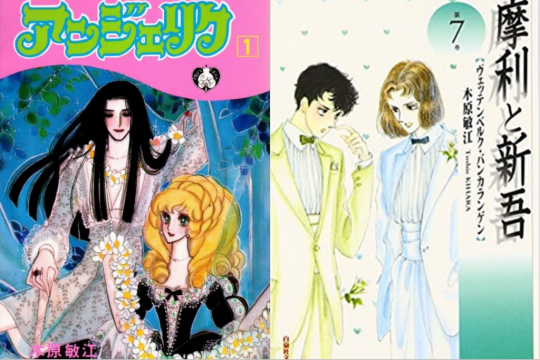
♡ Angelique (1977-1979)
- Shōjo (romance, historical)
♡ Mari to Shingo (1979-1984)
-Shōjo (bl, historical)
—NANAE SASAYA (1950-)
She is the youngest of four siblings. Her father wanted all his children to go to university and become teachers, but she gave it up to dedicate herself to manga. Is known for her horror stories with occult themes.
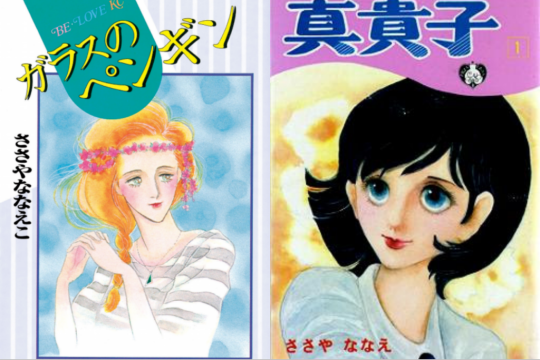
♡ Glass no penguin (1983)
- Josei ( Drama Slice of life)
♡ Makiko (1976)
- Shōjo (romantic comedy)
—YUMIKO OSHIMA (1947-)
Implanted new ways of making manga. Likes characters' thoughts being free on the page instead of in speech bubbles.
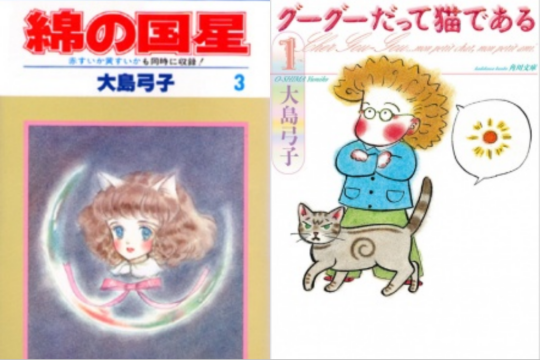
♡ Wata no Kuni Hoshi (1978-1987)
- Shōjo (fantasy, Romance)
♡ Gou Gou Datte Neko de Aru(1996-2011)
- josei (slice of life)
—MINORI KIMURA (1949-)
She debuted professionally at the age of 14 and, despite her very little recognition in the West, she is considered one of the brightest members of the "Year 24 Group". Some of her works are educational and deal with health issues.
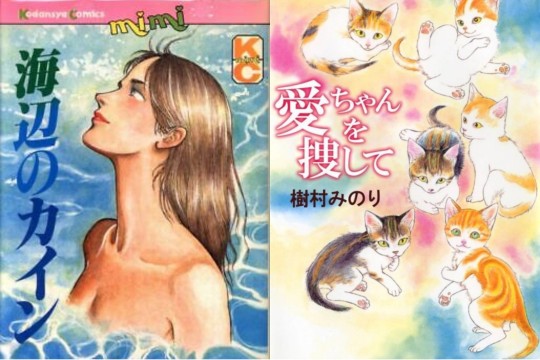
♡ Umibe no Cain (1980-1981)
-shōjo (yuri)
♡ Ai-chan wo sagashite (2011)
- shōjo (slice of life)
The effort of each of them was not in vain. The women of the Year 24 Group have achieved great awards and recognition over the years. They were nominated for 10 years in a row for one of the most prestigious Science Fiction awards in Japan, the Seiun Awards, and won up to 6 times (1978 y 1988). Moto Hagio won the Seiun Award in 1980, 1983 and 1985. They have also been awarded another of the most prestigious awards, but this time it is for manga, the Osamu Tezuka Cultural Award. Moto Hagio was the first person to receive the Osamu Tekuza Award for Excellence (1997). Some years later Ryoko Yamagishi and Keiko Takemiya also won it.
The Forty-Niners were the main and most relevant mangaka, but it doesn't mean that other female mangaka didn't arise during that time. Perhaps they didn't have such a revolutionary ideology or innovative way of making manga as the women of the Year 24 Group, but they also contributed to the world of manga (like Sumika Yamamoto with her manga Ace wo Nerae!)
The mark that these mangakas have left and continue to leave is not small at all. They have reinvented, innovated and set aside the limits. They made great strides despite having many things against them and thanks to all that, their works are classics today and all of them influence many current artists.
175 notes
·
View notes
Text
The Hunt for Priceless Tears
What would you do if you tried to find something that is basically non-existent on the internet? What if you have searched the depths of the internet, wading through the old Geocities sites and Japan's National Diet Library's archive for a specific piece of work? When nothing came to fruition, would you lay down and say "There is nothing else that I can do."?
Many might've just stopped there and called it a day but, where there is a will, there is a way.
Context: Why I Started Looking
As an admin of the Bungō Stray Dogs Wiki, I try to make sure that all of our pages are up to standards. The pages for the Abilities for the series are there to give readers a better picture of what the characters can do and most importantly for myself, the origin of the work and how it represents the character in the series.
The Hunting Dogs were introduced in Chapter 60 of the manga introducing some rather obscure writers from Japan (in the western world at least) to a lot of new people. The four of them were:
Fukuchi Ōchi (福地桜痴, 1841 - 1906) an important figure who created Japan's first daily newspaper.
Suehiro Tetchō (末広鉄腸, 1849 - 1896) a politician who wrote political novels.
Ōkura Teruko (大倉燁子, 1886 - 1960) a detective novelist from the Shōwa era.
Jōno Saigiku (条野採菊, 1832 - 1902) a journalist who worked with Fukuchi with his newspaper.
The last figure was particularly interesting as his ability page was the only one with a severe lack of any information on their original work.

What can be clearly seen is a massive difference in the content for the three authors in comparison to Jōno. Perhaps this is because he was more known as a journalist rather than a writer for kabuki plays. Other than that, the other works exist on the online space under many different forms of media.
Mirror Lion was already a famous kabuki play with the script and summaries of the play online, the performance of the play was also on YouTube.
Gasp of the Soul's text has been uploaded to Aozora Bunko.
Plum Blossoms in Snow has an entire Wikipedia article along with a scan of the book being on Japan's National Diet Library.
Priceless Tears however, had nothing other than the information listed on Jōno's Wikipedia page.
For the sake of making the pages equal, I decided to look up any information on the plot for Priceless Tears so the pages follow to the Wiki's standards.
The Search Begins
A.K.A. How I Stopped Worrying and Learned to Love the Search
So I started looking first in kabuki21.com where the people can find summaries and information on many other kabuki plays.
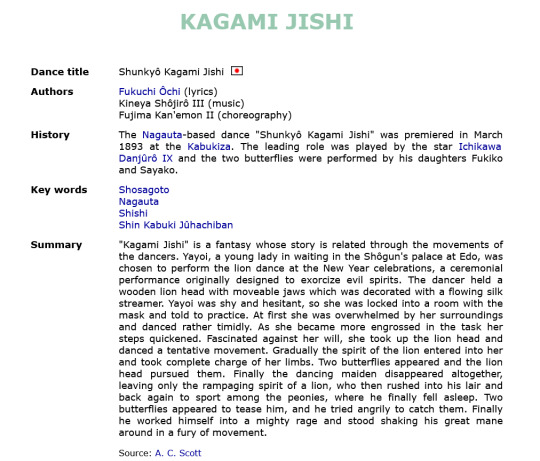
This was where the wiki sourced its description for Fukuchi's Mirror Lion. As you can see the information about the play is quite thorough so it was my number one hope in finding something related to the play but alas, nothing regarding the play Priceless Tears or even anything on the author. My first reaction is just "Fine, it might be a pretty obscure play. Maybe it'd be on the Japanese internet."
Boy was I wrong.
Looking through the Japanese internet was equally arduous, looking up the name only lead to people asking about the ability from the series and wondering what it can do. Looking it up with the name of the writer did not help either, wading through the many articles there wasn't much. However, there was a slight salvation to the bad streak.

An fc2 blog page with some information on Meiji-era figures. The page listed the date that Priceless Tears was published. Meiji 22 (1889) in November. But this feels like it's not quote there yet in terms of enough information for what to look up.
I then decided to look up issues of the magazine it was published in, Kabuki Shinpō, specifically in the National Diet Library where many old books are are archived and digitized. However this did not yield any meaningful results since the edition that had Priceless Tears was not digitized yet.
Breakthrough
After clawing through websites, I somehow encountered an entry in the Kyushu University Library which immediately caught my eye. Not because it had a lot of interesting information but, because my friend goes to that university. Immediately I contacted him on Discord to check his university's library. A few days later we hopped on a call to talk about what I needed in particular for this.

This entire discovery was a complete coincidence, while my friend has mentioned the university library and hell we screwed around in Google Maps to see the thing but, really the thought has never crossed my mind that they would store Meiji-era books. This entire discovery kept me up at night and I could not handle what the future might bring at this point. It felt rather surprising to say the least because as far as I have seen, there are no digital copies of Priceless Tears, let alone the synopsis of the play.
A few days after the discussion, my friend hit me up and we decided to call through Discord to find the book. The first obstacle was unexpected however, it was the signal inside the library which is atrocious to put it lightly. At this point however, I was determined to get something out of this trip. At first we couldn't find the book at all until my friend found it in the shelves. Unfortunately, there were several volumes and not only that, these books were the original Meiji-era copy so they were fragile.
We then decided to talk to one of the librarians who gladly helped locate the book, after some amount of broken Japanese, we got through and we found the exact page where the story was located.

It felt like looking through a treasure trove but we came here for exactly one thing and that's when it was a little bit late when I realized that my friend had only took the picture of the synopsis. The other pages are those of other plays from the same edition of Kabuki Shinpō. Due to the book being fragile, we decided that it's better to leave things this way rather than risk the book being further damaged but, at the very least we had the synopsis which was better than zero.

At last, we have the synopsis. Again I forgot something very important at this stage and that is to look for a translator. A translator who understands the Kyūjitai kanji which was used during the Meiji-era. During this time I spent the time transcribing the text to preserve what we have at the very least. This was how it went for the next few months, the synopsis still in the back of my head and I couldn't do much about it.
A Little Help From My Friends
The Light Piercing Through the Shadows
Someone had pinged me on the Bungō Stray Dogs Wiki Discord that they were able to do translations, immediately the first thing I had in mind was to pull out the script for Priceless Tears. They were very kind and was very much happy to help which was a massive relief. After almost a solid year, we finally have a picture of what's going on.

It honestly still feels unreal and I am greatly shortening this entire search. I hope that one day the full script will be transcribed online so that it's easier to understand the greater picture.
Conclusion and thoughts
This entire search just made me feel so many emotions, I honestly am proud of the efforts and lengths my friends went through to help out with this silly little picture. At the same time this project reminded me about how important it is to archive archaic documents for future reference. Even if it's just something done for a manga series, I am still very happy that some glint of information exists now on the web about this play.
I really do hope this specific issue of the magazine will be uploaded to the NDL for easier viewing, if that ever happens then I'll be glad to update things on that front.
Special Thank You to
My friend Kevinoshita who helped track down the book to Kyushu University's library.
Other members of the SampleText Discord group.
Members of the Bungō Stray Dogs Wiki Discord.
Members of the Bungō to Alchemist Discord.
Pengumi from the Bungō to Alchemist Discord who helped with the transcription.
れぃ from the Bungō Stray Dogs Wiki Discord who helped with the final translation.
106 notes
·
View notes
Text


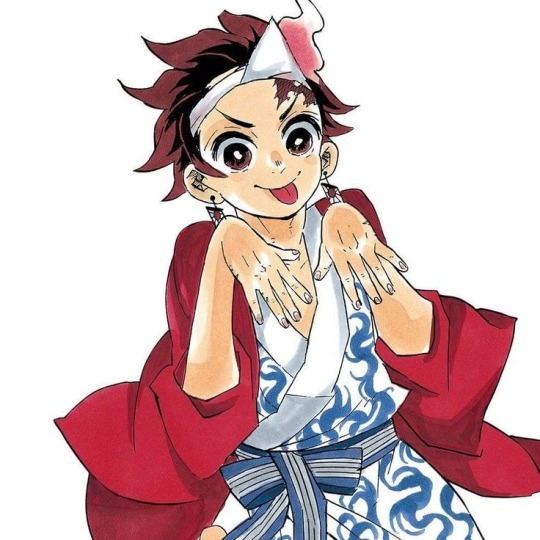


A Love Only I Can See
Ghost!Kamado Tanjiro x Fem!Reader
Warnings: MANGA SPOILERS!!! Doesn't follow the manga/anime plot but has a bunch of details from the manga. Death. Takes place in the post showa era in japan (1950's to be exact)
Sypnosis: A sickly girl who has the ability to see spirits falls in love with one, how lucky that you get to meet him in the afterlife.
Kat: Happy Halloween!! (It's already november and I posted this rlly late but let's just pretend xoxo)

It's been a long time since the taishō era. Years since Tanjiro Kamado died.
While yes, he succeeded in killing the infamous Muzan Kibutsuji and turned his demon sister back human, but as most good things come to an end, he never recovered himself. Dying tragically from the serious injuries inflicted upon him.
A kind kind soul Tanjiro was, so sweet and nice. If only he could've lived longer to be with his sister and his friends. What a shame.
Few years later, the post shōwa era began, you grew up in the city with your well-off parents. They did everything money could pay to ensure you wouldn't be in so much pain all the time. But even so, being cooped up in your house and can't even go on something as simple as a walk is just plain lonely.
Despite being sickly and fairly weak, you weren't that different compared to other girls your age, you liked reading, enjoyed the company of your peers and so on. But ah, theres just one more thing, you have the ability to see ghosts.
You loved talking to them ever since you were a kid, some of them were pretty nice! You see, souls of the dead are given a choice if they could go on to the afterlife or continue to stay on earth for a while to roam around. Whether they're here watching over loved ones or just roaming around, there's always bound to be a kind spirit you'd meet.
Like this one, recently you've met with a spirit named Kamado Tanjiro. Your granny always warned you about your special ability ever since the time you started talking to your deceased grandfather when you were about six. You never even knew he was dead! He passed away before you were born.
Well moving on, it all led up to this very moment. Tanjiro was astonished. Of all the years he'd spent watching over his family and friends and even their families, he's never met anyone who could see him. He sure thought you were special.
With a surprised look, he points to himself in shock. "You can see me? I thought humans can't see the deceased," you nod in response. Honestly, you're actually used to this response from other spirits.
Seconds later you've gotten along easily, I mean it is Tanjiro we're talking about. Talking for hours straight, you didn't even realise you should be going home. Saying your goodbyes, you bid farewell to the kind spirit.
The same thing happened the next day, and the next, and so on. You don't even talk to the other spirits you've befriended as much as you do with him. You must really like him. And if you're being honest, you so do. You know a human can never fall in love with the dead but you've been falling head over heels for the boy each and every time you talk to him.
Walking up to where he usually hangs out, a small place near a shrine where his grave sits. You ask to talk. "I'm afraid my sickness is getting worse, I don't think I'll be able to visit as much." Bowing your head down apologetically, "It's alright, I can always visit you myself instead." He waves off.
"I'd like that." You smile, already looking forward to the next time you'll get to see eachother.
It's worse. So much worse. You've gotten so weak over the past month to the point where you couldn't leave the bed at all. Your parents have done all they could, but the doctor says you'll only have half a year at best.
The only thing calming you down during these painful times was Tanjiro. He stuck by your side always, he never seemed to leave. Always accompanying you when you were left alone.
Finally, your last moments were upon you. But you were alone. Well- not alone per say, Tanjiro was with you of course. After saying your goodbyes to your family, you had wished for your last moments to be alone, with him.
Vision becoming blurry, hands shaking, you didn't have much time. With your last dying breath, you let out a single sentence you've been wanting to tell him for so long. "I love you."
As soon as you went cold, you've awoken in a bright place that gave you a warm and at home feeling, this must be the afterlife. You feel light, like all the pain you've been dealing throughout your life had vanished.
The rough pads of a hand gently grab ahold yours, the sight of Tanjiro sweetly smiling at you made you feel more at ease. The smile you fell in love with.
Lightly interlocking your hand with his, he utters out a sentence that fills you with relief. The kind of relief you've been yearning for.
"I love you too."

#demon slayer#kamado tanjirō#tanjiro kamado#tanjiro kny#kny#kny tanjiro x reader#tanjiro x you#tanjiro x reader#kny tanjiro kamado#kny tanjirou#tanjiro#tanjiro kimetsu no yaiba#demon slayer x reader#kimetsu no yaiba#tanjiro fluff#demon slayer tanjiro
88 notes
·
View notes
Text
Let’s go cafe-hopping! - Cafes in Japan
What comes to mind when you hear the word ‘cafe’? Coffee? Pastries? Ambience music? These are commonly found in cafes. A typical cafe serves a range of savoury and sweet delights while offering you a tranquil place to hang out and snack.

First of all, did you know that 'cafe' is a word borrowed from the French but in turn, it was derived from a Turkish word meaning ‘coffee’? The coffee culture in Japan began when the Dutch brought coffee over and introduced it to the Japanese during their stay in Japan. Despite the initial poor reception from the Japanese, coffee would eventually become immensely popular amongst the people, a testament to Japan being one of the largest coffee consumers globally at present. This could be mainly attributed to the opening of kissatens - Japanese-style tearooms that served coffee and sweets.
Kissaten (喫茶店)

A kissaten somewhat bears a resemblance to a cafe but its name literally translates to ‘tea-drinking shop’. The main differences between a cafe and a kissaten is that a kissaten does not have the permission to sell alcohol, and possesses retro vibes unlike its chic counterpart. These Western-inspired coffee shops have a deep-rooted history. They are said to have appeared during the Shōwa-era (1926-1989) and rapidly gained traction due to the robust coffee culture back then (though there are claims that they have already been around before then). Kissatens are renowned for offering a relaxing and pleasant atmosphere while emphasising on hospitality and the craftsmanship of coffee. Although coffee is still greatly beloved by many, kissatens are waning in popularity due to the changes in consumers’ tastes and preferences. The Japanese, particularly the younger generations, mostly prefer heading to the trendy and convenient third-wave cafes for their coffee fix.
Collaboration cafe (コラボカフェ)

Collaboration cafes are one of the most popular types of cafes. Well, it’s quite obvious that their name stems from the fact that they collaborate with anime, games and other pop culture, isn’t it? Unfortunately, these are usually time-limited cafes so you’ll only get to enjoy their one-of-a-kind themed menus and ambiences for a short period of time. Nonetheless, it’s not uncommon for, let’s say an anime, to have more than one collaboration, except that the menu and decorations might be different!
Pet cafe

Animal lovers, these cafes are perfect for you. Moreover, unlike the usual pet cafes with dogs and cats, in Japan, you can find more exotic and unusual pet cafes such as hedgehog cafes, owl cafes and even a snake cafe! Besides having the chance to raise your oxytocin levels, you can also try out their menus which offer a variety of treats. You definitely won’t want to miss the opportunity to sip a glass of delightful iced matcha while gushing over a tiny hedgehog in a miniature bathtub, right? But do treat the animals with care and respect when you visit one!
Manga cafe (漫画喫茶)

If you take a stroll around the streets, you probably will pass by a few manga cafes. Indeed, manga cafes are places for you to read mangas from their extensive collections (provided that you do pay a fee). However, they are more than just that. Besides offering food and beverages, the manga cafes opened 24/7 have a range of amenities; for instance, Wi-Fi, showers, computers, televisions and even laundry. They are essentially cheap accommodations. By booking a cubicle or a booth there, you have gotten yourself a place to rest. Would you stay in a manga cafe overnight?
~
We can all agree that the food in Japan is oishii, right? So do check out the various cafes and even the kissatens when you visit Japan next time (maybe soon if you had read the news 👀)!
~
Pictures:
Kissaten (Chatei Hatou)
Manga cafe (Cafe Grace Field)
Pet cafe (ChikuChikuCAFE)
Manga cafe (Hailey’5 Cafe)
5 notes
·
View notes
Note
My favorite manga from Inio Asano is solanin
Ohh, I haven’t read this one yet but it’s on my list! I quite like Inio Asano’s manga, he has such a knack for telling stories with such bitter twists that you just can’t forget them. There’s also such a big contrast between his character design choices that are never quite explained in universe, such as Punpun and his family being portrayed as creatures instead of humans and all non main characters being drawn in a style reminiscent of Shōwa era manga as an allusion to the protagonist’s love for the in-universe version of Doraemon and just how serious the narrative can be…
Like, I wouldn’t recommend his works to everyone because they deal with VERY dark themes sometimes (especially Oyasumi Punpun) but both manga had me enraptured from beginning to end.
#answers#itadoraable#it’s not something you’d want to read if you don’t like protagonists that are pretty awful people though
3 notes
·
View notes
Text
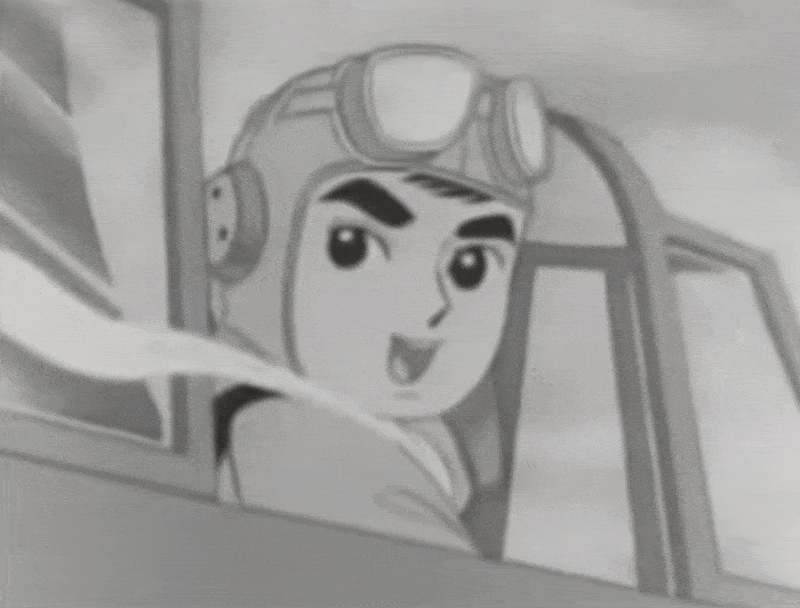
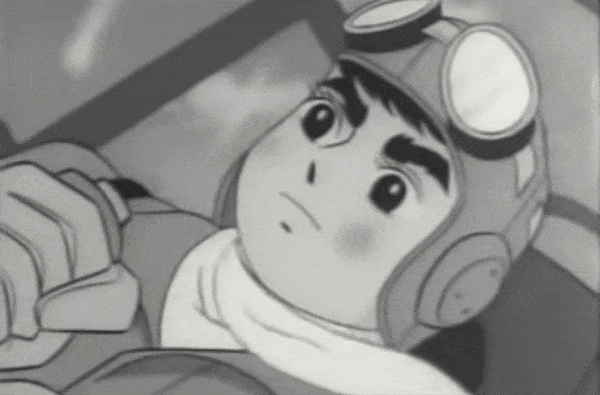

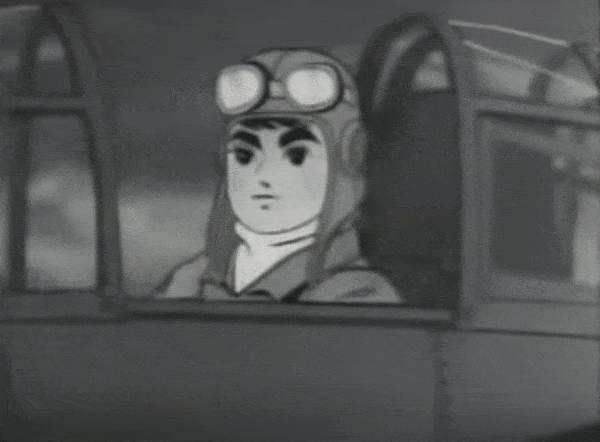
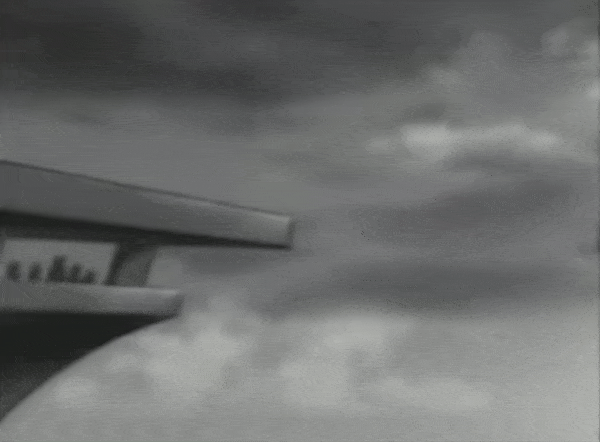

Zero-Sen Hayato (1964)
#60s manga#60s anime#vintage anime#1960s#60s Japan#gif#anime gif#old anime#shōwa anime#shōwa manga#showa anime#showa manga#black and white anime#retro anime
2 notes
·
View notes
Text
Toku Tuesday Nine: the Heisei era
Sup Tokufans! I’m keeping this short because I want to draw a speed battle today as well, but tonight! I have two very exciting films to show you all!
Last year marked the end of the ‘Heisei era’ of Japanese history, in which the Emperor Akihito was sitting on the big throne, carrying the three artefacts etc. Officially it spans from ‘89 to 2019, which makes it a helpful benchmark for the most important task of periodising long-running tokusatsu shows.
So tonight, we have a Godzilla that seems to be a widespread favourite, Godzilla vs Biollante (1989)! This time around, Godzilla’s opponent is a giant plant woman. With the Heisei era, Tōhō kicked off a new continuity; only the original film remained ‘canon’ to this new storyline, and they gave it a new director sequel in Return of Godzilla (1984). Biollante is the second film of this era: Godzilla’s just shown up again, only to be cast into a mountain, and now scientists are fucking with her cells for evil science reasons.
youtube
Nturally the result is a giant plant/human/godzilla hybrid monster called Biollante, who, it seems, sets about doing what kaiju do best: blowing shit up. And apparently won the hearts of every toku fan trans girl I know. So Godzilla has to go and fight her. Going off the trailer, this leads to some pretty spectacular shots - I love the image of Biollante in the water surrounded by mist with her big flower face. We’ll see what she has in store soon.
Our second film hops to the other end of the era: the fantastic idea of @lyravelocity to throw us into the deep end of the Kamen Rider franchise with Kamen Rider Heisei Generations Forever (2018), a massive crossover between Kamen Riders (deep breath) Zi-O, Build, Den-O and W. ‘But Bryn, I haven’t seen any of those shows!’ Well neither have I! - and that’s kind of the point, to witness a spectacle which might just make all those weird films we’ve seen so far look tame. All these different Kamen Riders have, in the space of a movie, to reprise their various character arcs and relationships, pull out their individual gimmicks, show off their suits and all the things that fans expect - which means an absolutely breakneck pace of gleeful superhero nonsense.
What exactly is Kamen Rider, anyway? Its history is far too sprawling to recount in detail, but to give a rapid précis, Kamen Rider began in 1971, loosely based on character designer Shotaro Ishinomori’s grimdark revenge manga Skull Man. The toku show could not quite follow the manga down that road, but established the key elements of Kamen Riding: a motorbike-riding, insectoid hero, who transforms using a special belt.
youtube
The exact context of these elements, and the particular motifs, vary every year: though the Kamen Riders are at least nominally in some sort of shared universe, the themes of each series vary tremendously. All sorts of creators take a turn on Kamen Rider sooner or later - I’ve been told that Gen Urobuchi’s twisting, dark fruit samurai story Kamen Rider Gaim is an excellent place to start, though Kamen Rider Build’s dark war story and complex motif-combining concept also comes highly rated. But honestly you’d have to ask Alex for the full rundown!
A show as long-running as Kamen Rider has seen many different eras and trends; the show tailed off at the end of the Shōwa era with Kamen Rider Black [RX] in 87-89, only to return in 2000 with Kamen Rider Kuuga - and caught a major wave of popularity in 2007 with Kamen Rider Den-O.
So what’s Kamen Rider like? I can’t give the most detailed impression, because more than particular details I just remember @lyravelocity‘s enthusiasm when she’s telling me about the wild twists and stylistic flourishes of any given year’s Riders. But let me try anyway! Kamen Rider designs stand out to me as bright, toyetic, almost unphysically shiny, not entirely surprising since they are kind of literally an elaborate toy advert... but toy ad or not, at their best, they fully commit to delivering something strong in its own right, taking advantage of their huge casts and long runtimes to create elaborately twisty plots that never sit still.
I do realise this particular style of suit action may prove an acquired taste, but if you can convince yourself that it’s not actually cringe to enjoy people in colourful suits doing elaborate henshin sequences and all kinds of gay bullshit, it's actually a fucking great time. Certainly I am eager to get Kamenriderpilled and share in this thing that Alex loves so much! If that’s a feeling you share then please come join us...
Toku Tuesday Nine will start at 7pm UK time, which is two hours and 20 minutes from this post, at twitch.tv/canmom! In the mean time I will be animating a ‘speed battle’, so feel free to hop in before that.
5 notes
·
View notes
Text
Anime/Manga that make me go 🥺💕
Fruits basket

Given

Emma

Kanojo to kanojo no neko
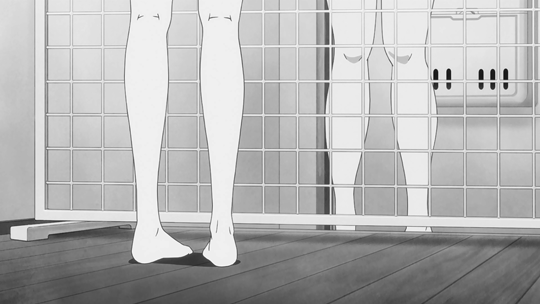
Soshite - hare ni naru

Hisone to masotan

Kimi to boku
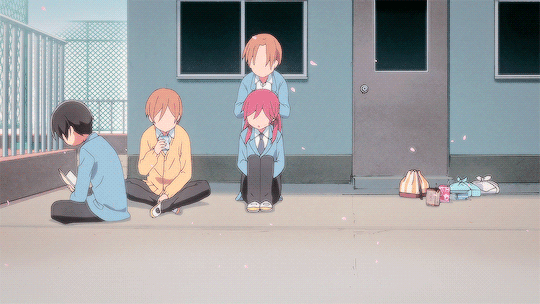
Housekishou Richard-shi no nazo kantei
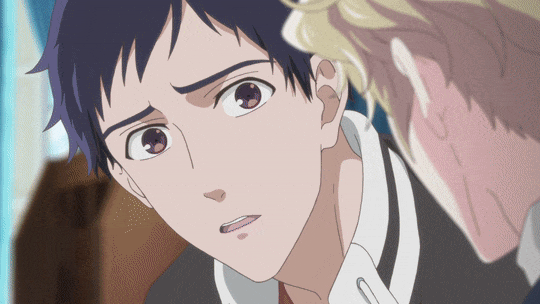
Bokura no koi wa 10 cm datta
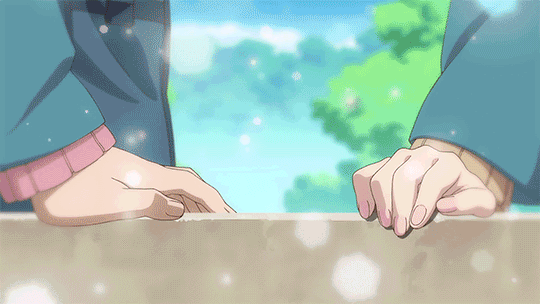
Shōwa Genroku Rakugo Shinjū

#anime recommendation#manga recommendation#given#shouwa genroku rakugo shinjuu#emma: a victorian romance#fruits basket#soshite hare ni naru#she and her cat#hisone to masotan#housekishou richard shi no nazo kantei#utakoi#bokura no koi wa 10 cm datta
98 notes
·
View notes
Text
Cure For Quarantine Boredom List!

Hey dear! I’m doing well, healthy and safe, thank you for asking! I hope you are doing okay wherever you are! This is such a good idea, thank you for the ask! I’ll place this under a cut because it will be long and I’ll try to throw out tons of diff categories.
Documentaries
Darkon
Grey Gardens
Confessions of a Superhero
Marwencol
Dark Days
The Wolfpack
I Think We’re Alone Now
The Invention of Dr. Nakamats
Jiro Dreams of Sushi
Murderball
Voyeur
My Brothers Keeper
Dear Zachary: A Letter to a Son About His Father
The Thin Blue Line
Evil Genius
One of Us
A Married Couple
The King of Kong: A Fistful of Quarters
The Queen of Versailles
Jesus Camp
Restrepo
Don't F**K With Cats
The Keepers
Tell Me Who I Am
The Imposter
Married to the Eiffel Tower
Nanook of the North
Salesman
Mommy Dead and Dearest
Finders Keepers
Crumb
Steal A Pencil For Me
The Most Dangerous Animal of All
The Menendez Murders
The Staircase
The Jinx
The Confession Tapes
Movies
Seven Samurai
Rushmore
Panic in Needle Park
Hunt for the Wilderpeople
Darjeeling Limited
Gone With the Wind
2001: A Space Odyssey
Citizen Kane
Pulp Fiction
Closer
Lawrence of Arabia
Nightcrawler
Hook
What’s Eating Gilbert Grape
Miss Hokusai
Eraserhead
A Silent Voice
The Big Sick
The Hours
White Oleander
Donnie Darko
Reservoir Dogs
Pi
SLC Punk
Trainspotting
Moon
Angela’s Ashes
My Cousin Vinny
Planes, Trains and Automobiles
The Meyerowitz Stories
The Grand Budapest Hotel
Lost in Translation
Blue Velvet
The Graduate
Sideways
The Skeleton Twins
Don’t Be a Menace to South Central While Drinking Your Juice in the Hood
500 Days of Summer
The Goonies
Lars and the Real Girl
Animatrix
A Clockwork Orange
Saved!
OfficeSpace
Memoirs of a Geisha
Hard Candy
Capote
Center Stage
Dirty Rotten Scoundrels
Moving
Harlem Nights
See No Evil, Hear No Evil
Tommy Boy
Uncle Buck
Spaceballs
Nothing but Trouble
The Great Outdoors
Captain Ron
Evil Dead
National Lampoons Vacation
The Goonies
Airplane
The Royal Tenenbaums
Labyrinth
Black Sheep
Beverly Hills Ninja
K-9
Cleopatra
Schindler’s List
The Pianist
Parasite
Spirited Away
Memento
Perfect Blue
To Wong Foo, Thanks for Everything
Binge Shows
Battlestar Galactica (04)
Letterkenny
The Office
Curb Your Enthusiasm
Game of Thrones
Terrace House
Chefs Table
The F Word
It’s Always Sunny in Philadelphia
Scrubs
House Hunters International
Masterchef
Masterchef Junior
90 Day Fiance
Nathan For You
Lost
Eastbound and Down
Seinfeld
Kdrama
Reply1994
Strong Woman Do Bong Soon
Cheese in the Trap
Anime/Manga
Shōwa Genroku Rakugo Shinjū
Ranma 1/2
Monster
Samurai Champloo
Steins;Gate
Shin Chan
Paranoia Agent
Silver Spoons
Inuyashiki
Parasyte: The Maxim
91 Days
Erased
Orange
Noragami
Tenjho Tenge
Vinland Saga
Lupin III
Tsubasa Reservoir Chronicle
xXxHolic
Given
Mushi-shi
Durarara
Gintama
Case Closed
Bungou Stray Dogs
Bakumatsu
Games
Animal Crossing
Fire Emblem Three Houses
Skyrim
Dark Souls III
Diablo III
The Witcher 3: Wild Hunt
Beyond: Two Souls
Grand Theft Auto series
Assassins Creed series
Ace Attorney
Pokemon Sword/Shield
Amnesia:Memories
Hakuoki
#quarantine rec list#movie rec list#game rec list#documentary rec list#mine#hope you find something good in here nonny!!!
63 notes
·
View notes
Link
Discotek Media announced at its panel at Otakon on Sunday that it has licensed the following anime: Senki Zesshō Symphogear, Bludgeoning Angel Dokuro-chan, Medabots, NG Knight Lamune & 40, Kyo kara Maoh! R, Kyo kara Maoh! 3rd Series, Cleopatra, Battery the Animation, and The Great Passage.

The company also announced it will release the Thermae Romae anime and the Galaxy Express 999: Eternal Fantasy anime film (artwork at right not final) on Blu-ray Disc, both with all-new English dubs next year. Discotek Media previously released Thermae Romae on DVD in 2013; the new dub will star David Wald as Lucius Modestus, Christopher Guerrero as Marcus Pietoras, and Jim Foronda as Emperor Hadrian. Howard Wang directed and engineered the dub at Sound Cadence, and co-wrote the ADR scrpts with Kyle Igneczi and ADR co-director Emily Fajardo. The new Thermae Romae release will include all six episodes of the anime plus a bonus episode. The company previously released Galaxy Express 999: Eternal Fantasy on DVD in 2012; the new release will feature 1080p high definition.
Additionally, Discotek announced it will release the City Hunter: Shinjuku Private Eyes film on Blu-ray Disc in the second quarter of 2020 with a new dub. The company had announced in April that it had licensed the entire City Hunter anime franchise, including the film. The film opened in Japan on February 8. Discotek will also screen the film in U.S. theaters. The television series is planned for a Blu-ray Disc release with English subtitles.
Discotek will also release Sanrio Films and animator Takeo Nakamura's stop-motion Nutcracker Fantasy film on Blu-ray Disc. The release will be 1080p native with a new transfer and an all-new restoration of the English version. The company licensed and released the film in 2017.
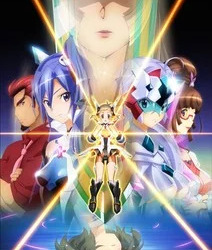
Discotek will release the first Senki Zesshō Symphogear anime on Blu-ray Disc in Japanese with subtitles next year.
The Senki Zesshō Symphogear franchise premiered with the 13-episode first season in January 2012. The second television anime, Senki Zesshō Symphogear G, followed from July to September 2013, and the third television anime, Senki Zesshō Symphogear GX, aired from July to September of 2015. Senki Zesshō Symphogear AXZ, the fourth season, ran from July to September 2017. The fifth season, Senki Zesshō Symphogear XV, premiered on July 6. Crunchyroll is streaming the series as it airs.
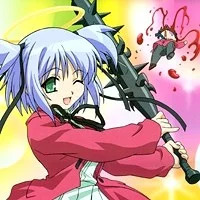
Bludgeoning Angel Dokuro-chan is based on Masaki Okayu's novel series. An eight-episode series of shorts aired in 2005, and then the Bokusatsu Tenshi Dokuro-chan Second OAV with four episodes launched in 2007. Discotek Media's release will feature both series on Blu-ray Disc with both English and Japanese audio. The release will feature a 1080i upscale and clean opening/ending animation sequences, and will launch in the first quarter of 2020.
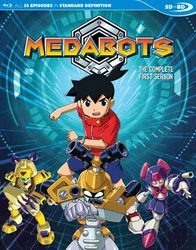
Discotek Media will release the first season (26 episodes) of Medabots on SD Blu-ray Disc in the fourth quarter of this year (artwork at right is not final), with the second season in the pipeline and Discotek looking into the third season. The release will feature English audio only with closed captions. Discotek told ANN it plans to release the Japanese version of the show (titled Medarot) "at some point in the future."
The anime originally aired in 1999 to 2000. ADV Films and then Shout! Factory previously released the anime on home video.
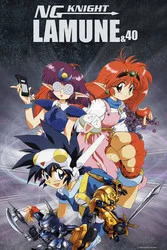
Discotek will release the 38-episode NG Knight Lamune & 40 on SD Blu-ray Disc in Japanese with English subtitles in early 2020. Crunchyroll began streaming the series last month from Discotek.
The anime is the first installment in the Ramune anime franchise, which also spawned the Knights of Ramune & 40 Fire TV anime sequel, as well as the Knights of Ramune & EX, Knights of Ramune & 40 DX, and Knights of Ramune OAVs.
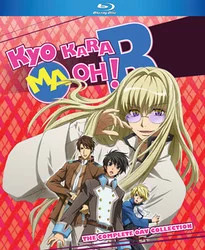
Discotek will release Kyo kara Maoh! R (artwork at right not final) and Kyo kara Maoh! 3rd Series on Bu-ray Disc in Japanese with English subtitles. Discotek will be the first company to release Kyo kara Maoh! R on Blu-ray Disc in any region. Kyo kara Maoh! R will ship in December 2019, and Kyo kara Maoh! 3rd Series will ship in 2020.
The five-episode Kyo kara Maoh! R anime shipped in 2007 to 2008. The 39-episode Kyo kara Maoh! 3rd Series aired in 2008 to 2009. Neither anime have been licensed in North America before. Crunchyroll began streaming the first and second "seasons" (episodes 1-78) of the Kyo kara Maoh! anime in May. Discotek licensed the anime in February.

Osamu Tezuka and Eiichi Yamamoto directed the 1970 Cleopatra film (artwork at right not final) at Mushi Production. Discotek will release the film on Blu-ray Disc in 1080p high definition with English subtitles. Third Window Films previously released the film in the United Kingdom.
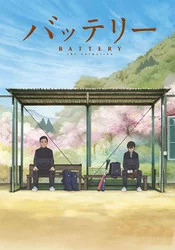
The 11-episode Battery the Animation series premiered in July 2016 in Fuji TV's Noitamina programming block, and streamed exclusively on Amazon Prime Video. The anime is based on Atsuko Asano's novels of the same name. Discotek will release the series on Blu-ray Disc in Japanese with English subtitles.
Tomomi Mochizuki (House of Five Leaves, Pupa) directed and scripted the series at Zero-G (Hyper Speed GranDoll, Shadow Skill, MD Geist II - Death Force). Takako Shimura (Wandering Son, Sweet Blue Flowers original creator) was in charge of the original character designs, Hideoki Kusama (Sket Dance, Mononoke animation director) adapted those designs for animation and also served as chief animation director, and Akira Senju (Valvrave the Liberator, Fullmetal Alchemist: Brotherhood) composed the music.
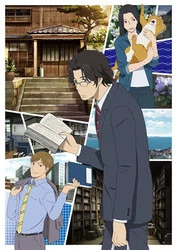
The 11-episode The Great Passage anime premiered in October 2016 in Fuji TV's Noitamina programming block, and streamed exclusively on Amazon Prime Video. The anime is based on Shion Miura's Fune wo Amu novel. Discotek will release the series on Blu-ray Disc in Japanese with English subtitles.
Haruko Kumota (Shōwa Genroku Rakugo Shinjū original manga creator) was in charge of the original character designs for the series. Toshimasa Kuroyanagi (Say, "I Love You". series director, Shōnen Hollywood - Holly Stage for 49, Shōnen Hollywood - Holly Stage for 50 director) directed the series at ZEXCS. Takuya Satō (Say, "I Love You"., Strawberry Marshmallow, Fate/stay night) handled the series composition, and Hiroyuki Aoyama (key animator for Summer Wars, Sword of the Stranger) adapted Kumota's character designs for animation.
#Galaxy Express 999#Symphogear#Dokuro Chan#Medabots#Discotek Media#Cleopatra(anime)#Battery the Animation#Kyo kara Maoh#NG Knight Lamune & 40#The Great Passage#Anime News Network#Finally we can get Symphogear on DVD here.
64 notes
·
View notes